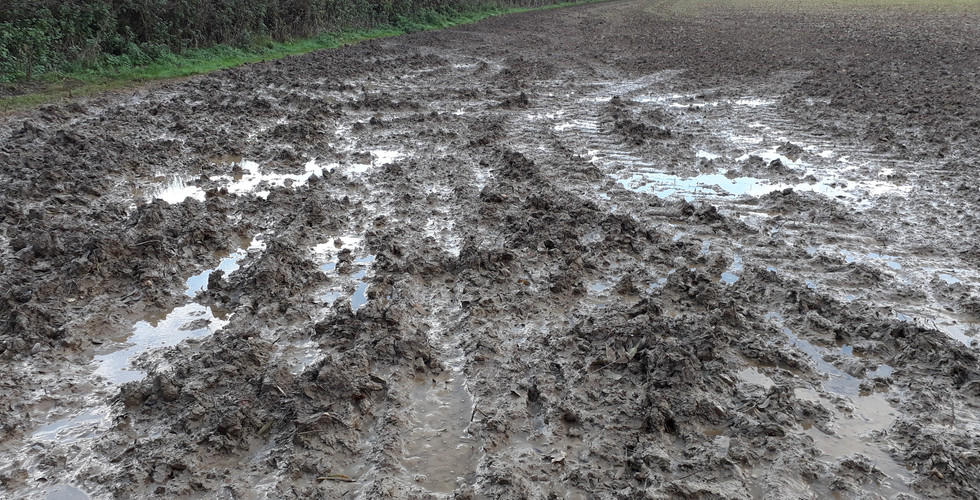COP 26 “guerra del clima.”
- Philip

- Dec 22, 2023
- 2 min read
It seems that a large proportion of fields throughout England have water visible on the soil surface. Soil texture plays its part regarding the rate that infiltration occurs but some soils have now been saturated with water for a considerable time.
Simply put a saturated soil is one where excess water fills the majority of the soil pores to the extent that it then “runs out the bottom.”
Waterlogging is one of the main abiotic (physical) stresses affecting crop productivity and is capable of causing annual yield losses of 20 to 50%.
The negative effects of waterlogging depend upon a number of variables including the depth and duration of waterlogging, the crop’s growth stage at the time of waterlogging as well as the prevailing weather conditions at and after the event.
This excess water changes several soil properties, one of which is soil oxygen availability; it disrupts diffusion to the plant roots. Such oxygen deficiency initially limits root growth and if sustained eventual root death.
Under these conditions, energy-dependent processes (based around oxygen) such as water absorption further reduces nutrient absorption and then transport to the shoot.
There is a decreases in leaf nitrogen content, a slow-down in carbon dioxide assimilation (production of “sugars”) as well as accelerated leaf chlorosis leading to premature leaf senescence or plant death.
Nitrogen (N), one of the most crucial yield-limiting nutrients, is typically extracted from the soil in the inorganic forms of ammonium (NH4+) or nitrate (NO3−).
In addition to the amount of nitrogen available in the soil, the form in which it is present influences plant processes, such as nutrient uptake, enzyme activity, photosynthesis and respiration rate, water balance and plant signaling pathways.
Waterlogging that results in reduced gas diffusion, leads to an increase in NH4+ in the soil. Although this ion is an intermediary in numerous metabolic reactions, when it is the only source of N, it may induce a strong inhibition of Potassium. Also important to remember is that wheat grows preferentially on NO3− nutrition. In waterlogged soils, substantial decreases (15–20%) in wheat growth and yield occur often as a result of the increased NH4+ levels found under such conditions.
Maybe a winter’s job for a frosty morning might be the use of a digger around some of the farm ditches?
























Comments